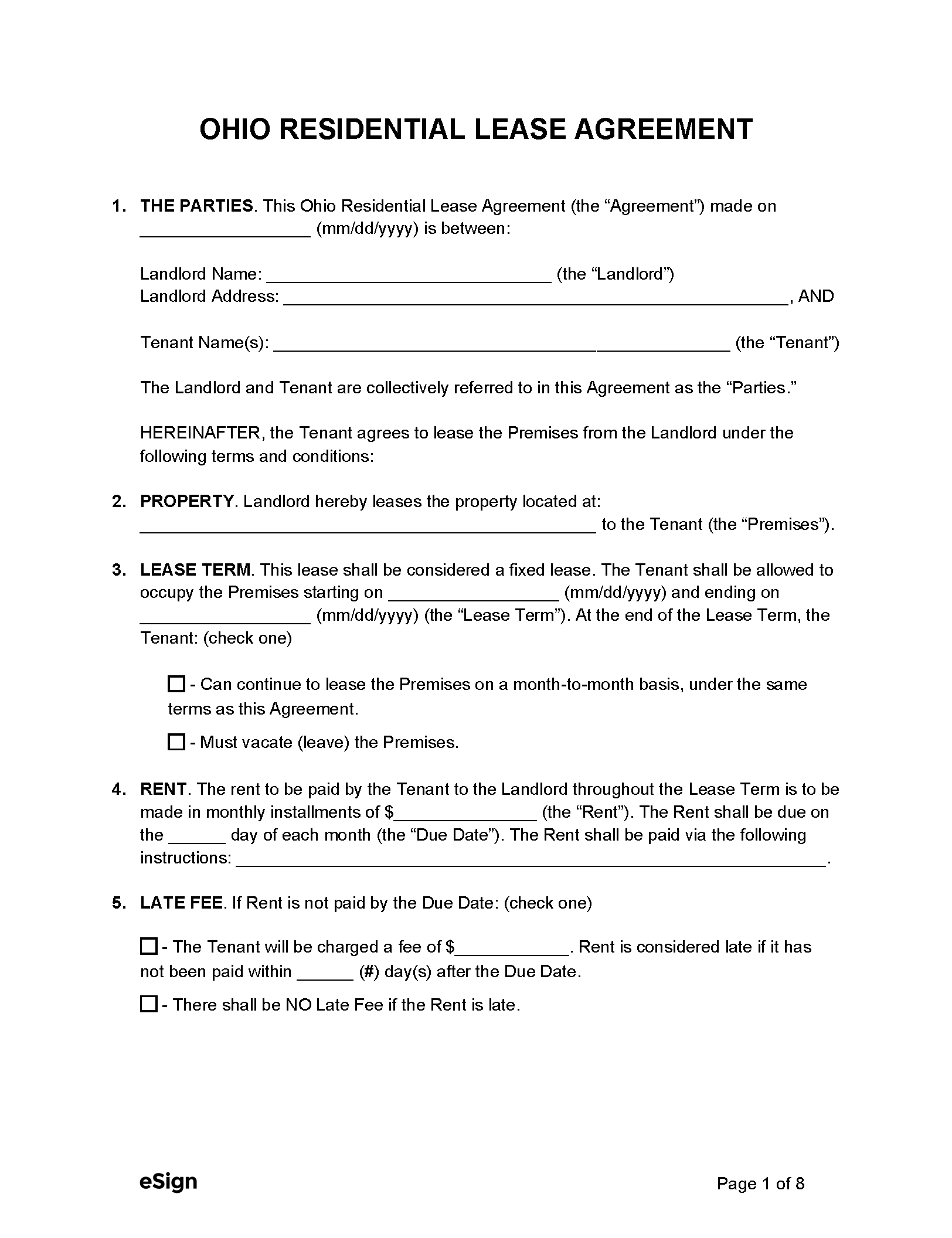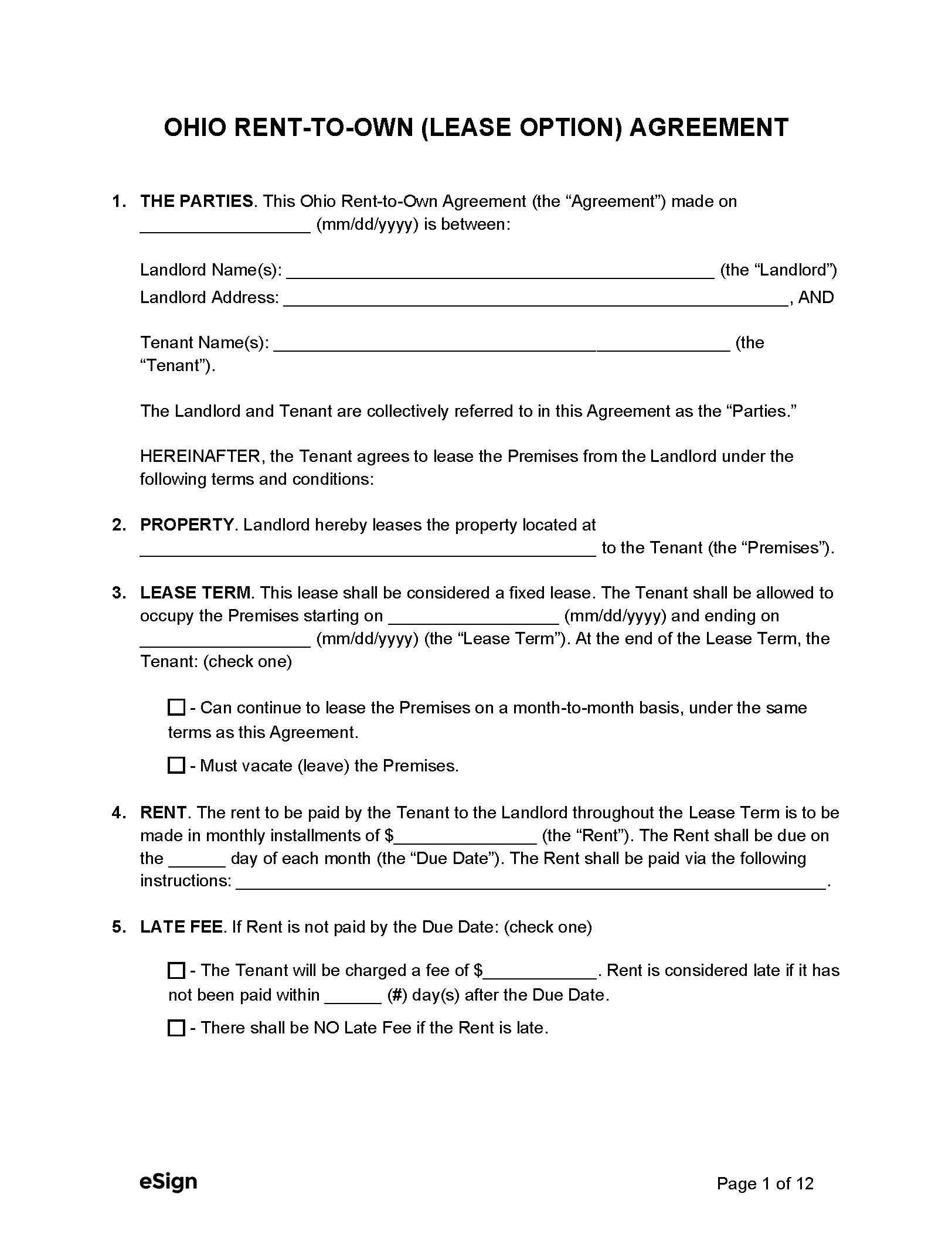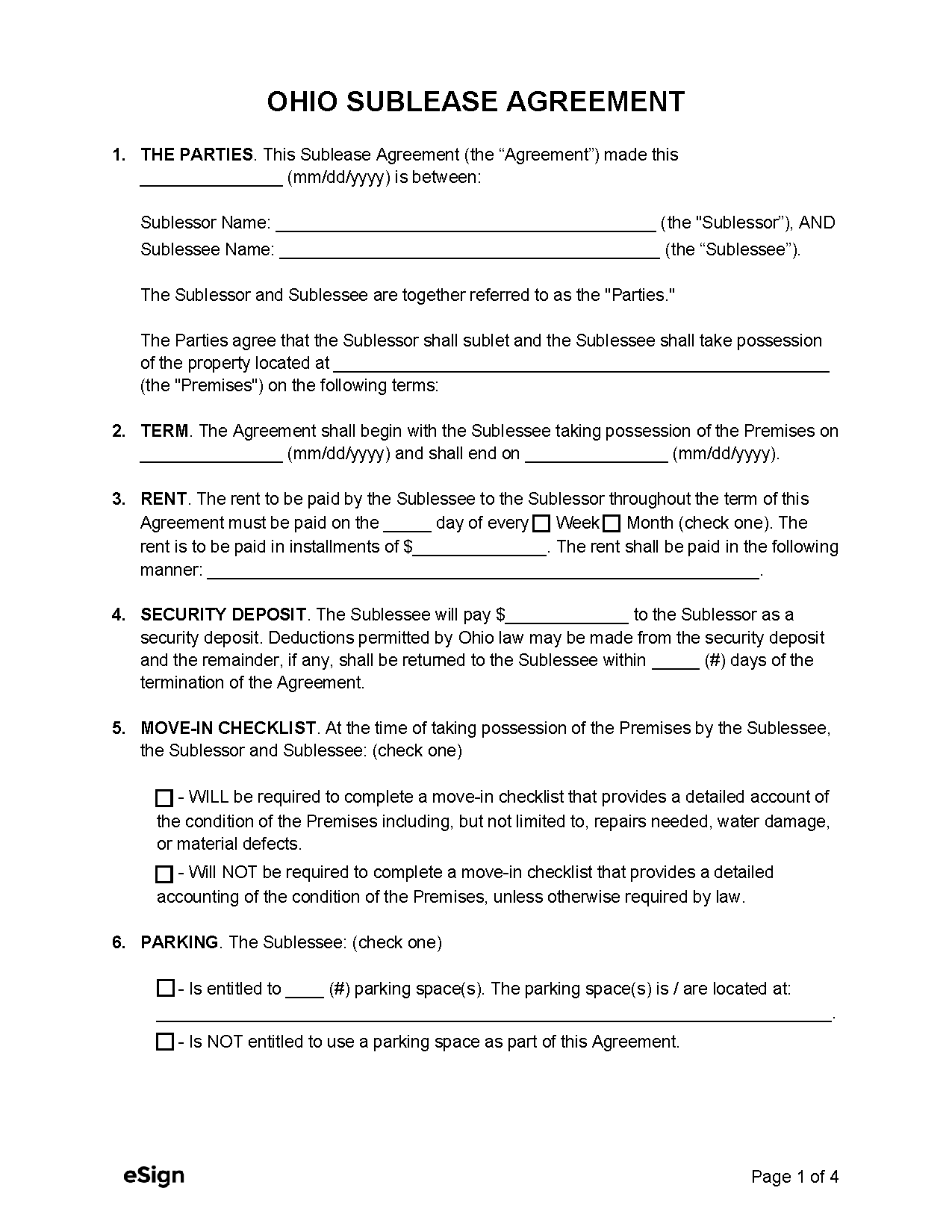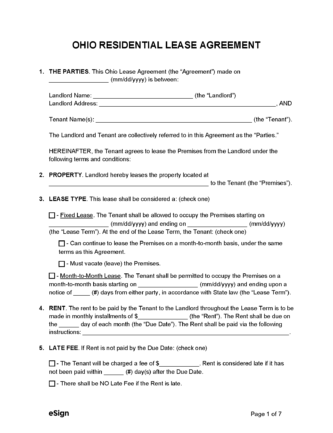Rental Application – Potential tenants can be asked to fill out this form that asks for employment information and their rental history.
Lease Agreements: By Type (6)
 Standard (1-Year) Lease Agreement – A standard lease agreement is a 12-month contract to rent residential property. Standard (1-Year) Lease Agreement – A standard lease agreement is a 12-month contract to rent residential property.
Download: PDF, Word (.docx), OpenDocument |
 Commercial Lease Agreement – This lease agreement is used to rent retail, office, warehouse, or other commercial real estate. Commercial Lease Agreement – This lease agreement is used to rent retail, office, warehouse, or other commercial real estate.
Download: PDF, Word (.docx), OpenDocument |
 Month-to-Month Lease Agreement – A rental contract with no fixed term that renews with each monthly payment the tenant makes. Month-to-Month Lease Agreement – A rental contract with no fixed term that renews with each monthly payment the tenant makes.
Download: PDF, Word (.docx), OpenDocument |
 Rent-to-Own Agreement (Lease Option) – Under this residential lease contract, the tenant is given the option to purchase the rental property if they conform to the contract’s terms. Rent-to-Own Agreement (Lease Option) – Under this residential lease contract, the tenant is given the option to purchase the rental property if they conform to the contract’s terms.
Download: PDF, Word (.docx), OpenDocument |
 Roommate Agreement – With this agreement, roommates can set duties and rules for their shared living space. Roommate Agreement – With this agreement, roommates can set duties and rules for their shared living space.
Download: PDF, Word (.docx), OpenDocument |
 Sublease Agreement – If a landlord allows it, tenants can use this form to lease their rental unit to another person. Sublease Agreement – If a landlord allows it, tenants can use this form to lease their rental unit to another person.
Download: PDF, Word (.docx), OpenDocument |
Required Disclosures (2)
- Lead-Based Paint Disclosure (PDF) – If leasing a property built before 1978, the landlord must disclose to tenants the existence of lead paint on the premises.[1]
- Landlord/Agent Identity – The rental agreement must contain the name and address of the landlord and the landlord’s agent (if any).[2]
Security Deposits
Maximum Amount ($) – No statute limits the amount of security deposit the landlord may charge.
Collecting Interest – If the security deposit is over $50 or 1 month’s rent, whichever is greater, the landlord must pay interest on the excess at a rate of 5% per year. This rule only applies to leases of at least 6 months.[3]
Returning to Tenant – The landlord must pay back the security deposit within 30 days of the lease termination date.[4]
Itemized List Required? – Yes, the landlord must provide the tenant with a written notice identifying the amount and the reason for any deductions from the security deposit.[5]
Separate Bank Account? – No, Ohio law does not require the security deposit to be kept in a separate account.
Landlord’s Entry
General Access – The landlord must give at least 24 hours’ notice before entering the tenant’s rental unit.[6]
Immediate Access – No notice is required before the landlord enters the rental unit in an emergency.[7]
Rent Payments
Grace Period – Ohio law does not require a landlord to give a grace period for a late payment.
Maximum Late Fee ($) – There is no statutory limit on fees for late rental payments.
Bad Check (NSF) Fee – If a tenant’s check bounces, the landlord may charge a $30 fee or 10% of the check’s value, whichever is greater.[8]
Withholding Rent – If the landlord has failed to keep the property liveable and safe, the tenant must send a written notification giving them 30 days to fix the problem. The tenant may pay rent to the municipal court or request a rent reduction while the landlord remedies the issue.[9]
Breaking a Lease
Non-Payment of Rent – notice to quit can be delivered to tenants who have failed to pay rent.[10]
Non-Compliance – The landlord may give the tenant a 3-day notice to quit if they breach a part of their lease.[11] A 30-day notice to quit may be sent to tenants, demanding they fix health and safety violations within that timeframe or be evicted.[12]
Lockouts – It is illegal for a landlord to lock the tenant out of their residence or attempt to force them out by terminating utilities or services. The only way to legally evict a tenant is with a court order.[13]
Leaving Before the End Date – If the tenant leaves before the lease ends, they will still be liable to pay the rent stated in the lease agreement unless a new tenant is found. The landlord must make reasonable efforts to find a new tenant.[14]
Lease Termination
Month-to-Month Tenancy – A 30-day notice to quit informs a month-to-month tenant that the landlord will terminate their tenancy in 30 days.[15]
Unclaimed Property – No state laws dictate a landlord’s obligations when it comes to personal property left behind by a tenant.

